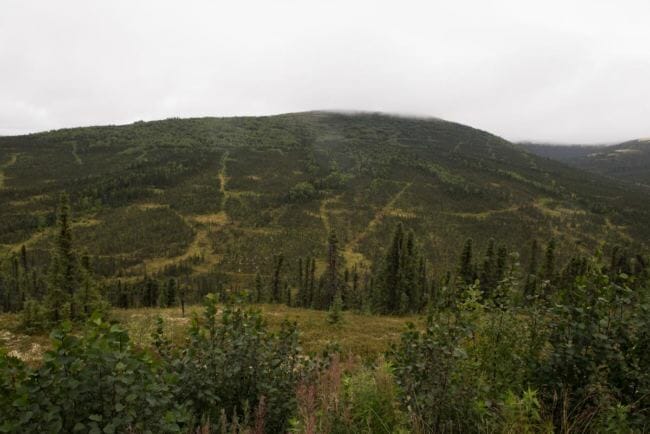
It took nearly four hours — and in that time, nearly 30 people filled the room to express their views about the proposed Donlin gold mine.
Alyssa Rogers is one of the founders of the Yukon Kuskokwim River Alliance, a local organization that opposes the mine. And she’s one of several who testified against the mine during the public hearing.
“This is a subsistence economy,” Rogers said. “It always will be and it always has been.”
The hearing was held at the group’s request — and the public comments were supposed to be focused on the Alaska Department of Environmental Conservation’s (DEC) draft approval of the plans for reclaiming the mine site and its financial assurances. But most of the comments were larger in scope.
William Charlie Brown, an elder from Eek, spoke in Yup’ik against the mine. Brown is afraid that a mine accident would contaminate the Kuskokwim River and its tributaries, which are vital food sources for the entire delta region.
The Donlin mine would impact about 3,500 acres of wetlands and permanently eliminate one salmon stream. Its tailings dam would partially eliminate another. As such, Donlin is required by Alaska law to pay to clean up and restore the land.
But many in the hearing were skeptical about the amount that the state would require Donlin to pay: $317 million. State documents put the actual costs to clean up the mine much higher at more than $1 billion.
But the DEC says that based on their calculations, the $317 million that is bonded to the mine would gather interest over the mine’s operating period – and be enough to cover reclamation costs when the mine shuts down. Donlin Gold expects to operate the mine for 27 years, with a possible extension.
But the question of who pays for the cleanup if Donlin goes bankrupt – and the state doesn’t have enough money to cover it – is where it gets complicated.
The proposed mine is being built on Native Corporation land; the Calista Regional Native Corporation and The Kuskokwim Corporation (TKC) own the subsurface rights and surface rights respectively. Allan Nakanishi, the technical engineer for DEC’s water division, said in the worst case scenario, the fight to pay for reclamation could become a legal battle.
“It’s unpredictable and I can’t predict what will occur once court action occurs,” Nakanishi said.
Maver Carey, the CEO of The Kuskokwim Corporation, which owns the surface rights, was the only representative from a native corporation who spoke at the hearing. Calista’s vice president of land development, Rosie Barr, attended but did not speak. Neither did two representatives from Donlin Gold.
Carey reminded the crowd that TKC’s primary responsibility is to provide value for their shareholders.
“Responsible economic development is a critical factor for our corporation,” Carey said. “Responsibly developing our land and natural resources was what our forefathers and founders identified when selecting lands, including mineral rich lands, for the betterment of all TKC shareholders.”
She added that TKC consulted with independent experts on Donlin Gold’s draft reclamation plans. As a cooperating agency, TKC, along with Calista, worked with Donlin and the state to come up with the current reclamation scheme.
And even with voices opposing the mine through public comment, it’s unlikely those will deter state agencies from giving Donlin the permits it needs to develop the project. DEC personnel say it’s rare that a permit is denied.
DEC’s Nakanishi says he’s worked at the agency for ten years. He never saw a permit in his division that got turned down.
Meanwhile, the public can submit comments to DEC and the Department of Natural Resources until 5 p.m. on September 6.
Correction: A previous version of this article incorrectly said that the Donlin Mine would eliminate two salmon streams. It would only eliminate one, American Creek, with its operations, while partially eliminating another, Anaconda Creek, by filling it in with its tailings dam. The company will restore other streams to mitigate the damage as part of its permitting requirements from the Alaska Department of Fish and Game.
